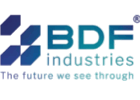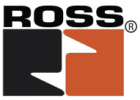Wood processor Schnurr uses partial automation from euroTECH on its crosscut saw
The answer to a staff shortage
The Schnurr company in Nordrach, a municipality in the Black Forest, has been processing wood for almost 170 years. Today, the company is in demand when it comes to individual wood packaging or sawn and planed timber. For managing director Michael Schnurr, this demand is both a joy and a headache: How can we work more efficiently and ergonomically despite a tight labour market situation? One solution is partial automation, due to its minimal need for space and pragmatic possibility for implementation. The vacuum specialist euroTECH from Rosenfeld provided Schnurr with an easily implementable vacuum lifter solution for loading the crosscut saw.
The demographic development in Germany did not pass by the Black Forest. More and more seniors are remaining professionally active for longer. Every employer is competing for junior staff. And it’s doubly difficult if that employer works in a sector that is traditionally seen as physically demanding. Michael Schnurr is the managing director of a traditional sawmill and planing mill in the heart of the Black Forest. He can’t change the population development. But he can change the work processes in his company. ‘The most important thing for us is to lighten our employees' workloads. Only if we use the possibilities of modern production and technology to make work easier will we be a more attractive employer in the future and shake off the image of the rough working environment in the sawmill’.
Focussing on the employees’ well-being
Therefore, he embraces the idea of automation. People entering a sawmill and assembly hall in the Black Forest expect to see a rustic atmosphere and rough-hewn ‘woodchoppers’ operating heavy machinery. Not so with Schnurr in Nordrach. The walls display oversized pictures and works of art, music can be heard, and visitors encounter two impressive robots and modern handling technology. A mixture of young, old, male, and female employees are relaxed as they work with machines, robots, parts, and systems. ‘We place great value on a pleasant work climate and our employees’ health. The robots are a great relief. However, we can’t arbitrarily expand our floorspace’, explains Michael Schnurr. Fully automatic production areas with robots need protection zones and safety fences to prevent accidents. The two existing robots are used to nail pallets and load them around a CNC machine.
More efficiency demanded of the crosscut saw
Now let’s focus on the crosscut saw. An employee with many years’ experience has always taken individual boards and pieces of squared timber in various thicknesses, widths, and lengths up to five meters from the pile and put them on the saw one by one. This has grown increasingly difficult for him, since the squared timber measures 10x12 cm and can weigh from 30 to 40 kg. Michael Schnurr needed a solution that would lighten the employees' workloads, minimise the need for personnel, take up little space, and bring greater efficiency.
Solution partner euroTECH
He put his trust in euroTECH in Rosenfeld. The company is know for its comprehensive engineering services in the vacuum handling of materials of all types. Small and mid-sized companies in particular profit from our customer-oriented solutions, sees Schnurr’s regional sales manager Mirko Weinhold as exemplary: ‘In principle, we can cover a wide range of requirements at manageable costs with our engineering department, the variable standards, and our in-house production. This allows us to relieve our customers of planning tasks and offer needed flexibility. Thanks to our many years of experience in the automation sector, we produce accurate results that go far beyond offering mere products. For the crosscut saw workstation in Schnurr, we’ve recommended partial automation. Full automation is out of the question due to the space-consuming movements of the forklifts carrying raw materials and the mandatory fenced-in safety area’.
Humans and machines hand in hand
Specifically, a portal with a vacuum lifting frame is built that uses a chain hoist to lift the load. The operator then drives a complete layer to the crosscut saw via a lightweight crane runway. The suction, ventilation, and up-and-down movements needed for this are guided by an ergonomic control handle. The area grippers are designed by euroTECH so that the suction box eT-Gripper can lift layers made of all types of wood without problems, from 70 mm wide and up to 5000 mm long. And for this system, this is a highly efficient advantage.
Enormous increase in productivity
Michael Schnurr is thrilled: The partial automation not only saves space, it keeps us from investing in complicated controls and sensor technology. Although it used to take fifteen minutes to position and process a single piece of squared timber, the suction cup now takes entire layers which the operator can easily saw in one minute. This is an enormous increase in productivity that allows us to use the saw’s
existing capacity much better. The sawn parts are still cleared by hand, but we’re already considering using the vacuum technology in this area as well, adding to our efficiency even more. We also continue to focus on automation and practical solutions such as those offered to us by euroTECH. Simply put, intelligent lifting systems do the heavy work, leaving machine operators free to concentrate on a speedy workflow. This gets rid of the safety fences at these workplaces, since the operators are in control. This allows us to relieve our employees of one-sided difficult and physical labour and work more efficiently with the same number of staff. At the same time, it allows us to use machines to take over the load movement done by our older employees who have been working longer at these workstations’. A convincing result that makes it genuinely easier for both the employer and the employees.



























